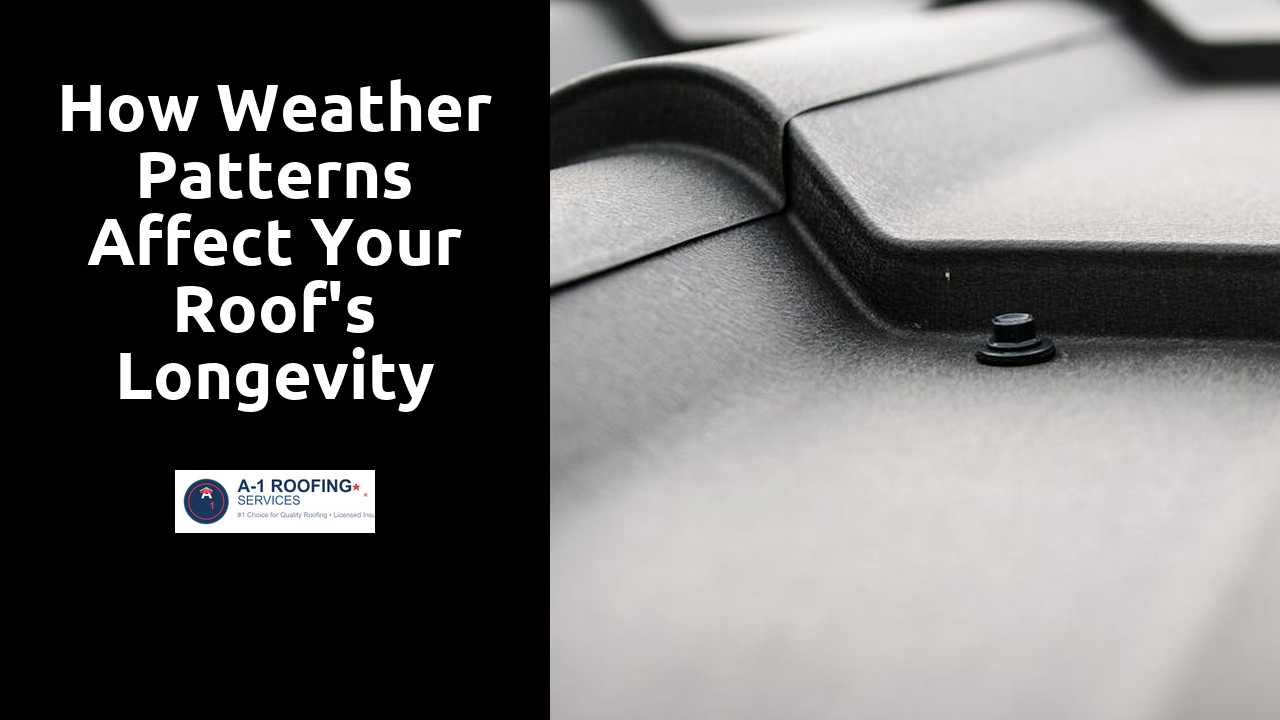
How Weather Patterns Affect Your Roof's Longevity
Table Of Contents
Temperature Fluctuations and Expansion
Extreme temperature variations can significantly impact the materials used in roofing systems. As temperatures rise, materials such as asphalt, metal, and wood tend to expand. Conversely, when the temperature drops, these materials contract. This continual cycle of expansion and contraction can lead to structural stress and eventually result in cracks or other forms of damage. Understanding how different materials respond to temperature changes is essential for maintaining a roof's integrity over time.
In warmer climates, the risk of thermal degradation increases, which can shorten the lifespan of roofing materials. Exposure to intense heat can cause surfaces to become brittle and lose their waterproofing properties. In colder regions, frozen moisture can seep into cracks and exacerbate expansion issues as it thaws and refreezes. Homeowners should be aware of these dynamics and take proactive measures to address potential vulnerabilities, ensuring their roofs endure the effects of changing temperatures.
This is an essential article for anyone looking to learn more about the topic.
How Heat and Cold Influence Roof Lifespan
Extreme temperature fluctuations can take a toll on roofing materials over time. High heat can cause shingles to expand, leading to potential warping and cracking. As temperatures drop, materials contract, which can create gaps or stress points that may not have been present initially. These continual cycles of expansion and contraction weaken the structural integrity of the roof, making it more susceptible to damage.
Additionally, prolonged exposure to heat can accelerate the aging process of roofing materials, diminishing their protective qualities. This breakdown may result in a reduced lifespan, necessitating earlier repairs or replacements. Conversely, colder temperatures can hinder the effectiveness of certain roofing materials, particularly those that rely on adhesives. Understanding these dynamics is crucial for homeowners to effectively maintain their roofs and ensure their longevity.
Humidity Levels and Roof Maintenance
High humidity levels can lead to significant issues for roofing materials over time. Excess moisture can promote the growth of mold and mildew, which not only damages roofing materials but can also compromise the overall integrity of the roof. Wooden structures are particularly susceptible to rot, and metal components risk corrosion when exposed to prolonged dampness. Regular inspections during humid months can help identify early signs of wear and prevent extensive repairs later.
Proper ventilation is essential in managing humidity levels within the roofing structure. Adequate airflow allows moisture to escape, reducing the risk of water accumulation and improving the effectiveness of roofing materials. Attic vents and soffit vents should be regularly checked to ensure they are functioning properly. Keeping humidity levels in check through effective maintenance can extend the life of your roof and safeguard your home from potential damage.
The Importance of Ventilation
Proper ventilation is crucial for maintaining the integrity of a roof. It allows for the circulation of air within the attic space, which helps to regulate temperatures and reduces the buildup of moisture. When hot air becomes trapped, it can lead to increased temperatures that may damage roofing materials. Additionally, moisture accumulation can cause the growth of mold and mildew, posing risks to both the roof and the overall structure.
Inadequate ventilation can result in significant long-term damage to roofing systems. Without adequate airflow, condensation can lead to deterioration of insulation and damage wooden structures. This issues can exacerbate during winter months, as trapped heat may cause ice dams to form. Regular inspections of ventilation systems are essential to ensure they function correctly, keeping both the roof and the living spaces below in top condition.
Seasonal Changes and Roof Inspections
Regular roof inspections are crucial, especially as seasons change. Each time the weather transitions, different stresses are placed on roofing materials. Winter storms can result in heavy snow accumulation, while spring rains may lead to leaks if issues go unnoticed. Summer heat can cause roofing materials to expand and contract, potentially weakening structural integrity. The autumn months are often a time for falling leaves and debris, which can lead to drainage problems if gutters are not cleared.
Timing these inspections can significantly impact the longevity of a roof. Homeowners should prioritize inspections at the beginning of each season to address any potential issues proactively. Early spring is ideal for checking winter damage, while late fall inspections serve as a precautionary measure before the harsher winter weather arrives. This proactive approach ensures that small problems are identified and resolved before they evolve into costly repairs.
Recommended Times for Roof Assessments
Regular roof assessments play a crucial role in maintaining the overall health of your roofing system. Ideally, homeowners should conduct inspections at least twice a year. Spring and fall are optimal times due to the change in weather conditions. Observing any signs of wear or damage during these periods allows for timely repairs, preventing minor issues from escalating into major problems.
Additionally, it is wise to inspect your roof after significant weather events. Strong storms, heavy snowfall, or hail can lead to hidden damage that may not be immediately visible. Prompt evaluations post-weather incidents help in identifying potential leaks or structural weaknesses. Keeping a schedule for these assessments ensures that your roof remains in good condition and extends its lifespan effectively.
Related Links
Seasonal Roof Upgrades to Enhance Energy EfficiencyThe Importance of Cleaning Gutters as Seasons Change